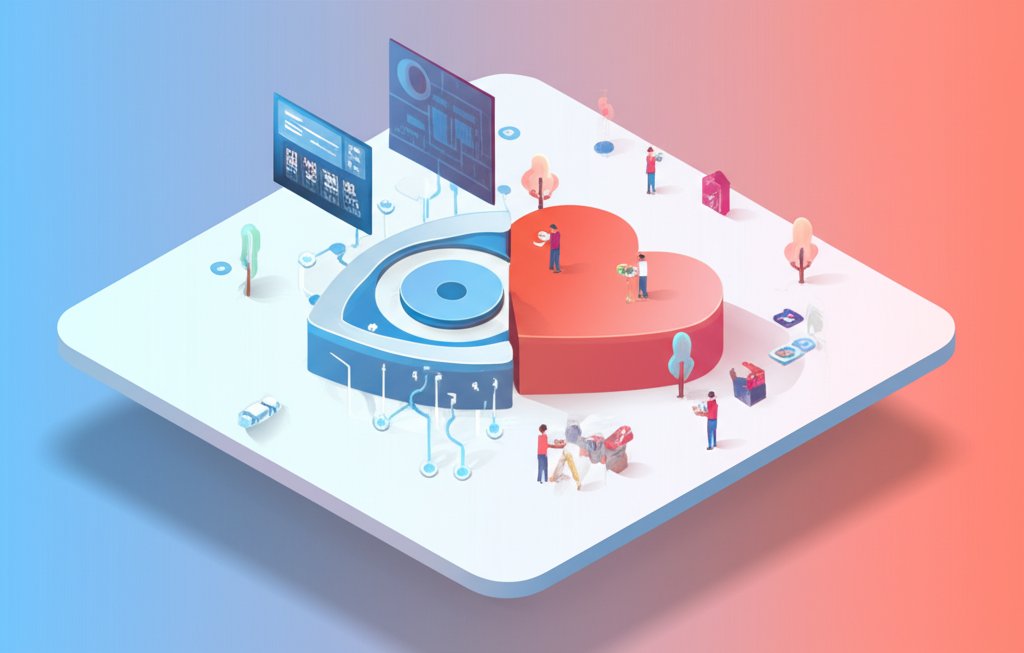Bill Gates’ journey to becoming a global philanthropist is often seen as a separate chapter from his tech beginnings, but understanding his early life can shed light on the values that drive his giving. While his new memoir doesn’t explicitly detail the mechanics of his philanthropy, it hints at the seeds of empathy and problem-solving that would later define his work with the Bill & Melinda Gates Foundation.
At a glance:
- Understand the early influences that shaped Bill Gates’ philanthropic mindset.
- Explore the key areas of focus for the Bill & Melinda Gates Foundation and the impact they’ve had.
- Learn how Gates’ approach to problem-solving influenced his philanthropic strategies.
- Discover the challenges and criticisms faced by the Gates Foundation and how they’ve adapted.
- Get practical tips for incorporating philanthropic principles into your own life and work.
The Seeds of Giving: Early Life and Influences
While the memoir, “Source Code: My Beginnings,” focuses on Gates’ pre-philanthropy life, it offers valuable insight into the development of his perspective. Growing up in a family that valued service and social responsibility played a crucial role. His mother, Mary Maxwell Gates, was deeply involved in charitable work, serving on the boards of several organizations. This exposure instilled in young Bill a sense of civic duty and the importance of giving back to the community.
His partnership with Paul Allen, and the subsequent founding of Microsoft, exposed him to different sets of challenges and opportunities. These early experiences undoubtedly shaped his understanding of complex systems, resource allocation, and the potential for technology to address pressing global issues. Understanding Gates’ formative years helps to connect the dots between his entrepreneurial ambition and his later dedication to large-scale social change. To explore Gates’ early life more thoroughly, you can Explore Gates’ Early Life.
From Tech Visionary to Global Philanthropist: A Natural Progression?

It might seem like a leap from computer coding to tackling global health crises, but for Bill Gates, it was a logical extension of his problem-solving mindset. He approached philanthropy with the same data-driven, results-oriented approach that made Microsoft a success. The Bill & Melinda Gates Foundation aims to address some of the world’s most pressing problems, from eradicating diseases like polio and malaria to improving global education and reducing poverty.
Key areas of focus for the Gates Foundation:
- Global Health: Developing and distributing vaccines, funding research for disease eradication, and improving healthcare systems in developing countries.
- Global Development: Addressing poverty, hunger, and inequality by investing in agriculture, sanitation, and financial services for the poor.
- Education: Improving educational outcomes in the United States and around the world by supporting innovative teaching methods and expanding access to quality education.
His tech background fueled his belief in using technology and innovation to solve complex problems. Just as he saw the potential of personal computers to transform society, he envisions technology playing a crucial role in improving global health, education, and overall quality of life.
Applying the “Microsoft Mindset” to Philanthropy
Gates’ approach to philanthropy is characterized by a few key principles, heavily influenced by his business background:
- Data-Driven Decision Making: Emphasizing rigorous data analysis to identify the most effective interventions and track progress.
- Measurable Goals: Setting clear, measurable goals and holding grantees accountable for achieving results.
- Partnerships and Collaboration: Working with governments, NGOs, and other organizations to maximize impact and leverage resources.
- Innovation and Technology: Investing in new technologies and approaches to address challenges more effectively.
Example: The Gates Foundation’s polio eradication efforts leverage data to track the spread of the virus, identify high-risk areas, and implement targeted vaccination campaigns. They also invest in research to develop new and more effective polio vaccines.
Challenges and Criticisms: Acknowledging the Complexities
The Gates Foundation is not without its critics. Some argue that its top-down approach can undermine local ownership and innovation, while others raise concerns about the influence of private philanthropy on public policy. Critiques also include concerns about vaccine patents influencing access for poorer nations.
The Foundation has responded to these criticisms by:
- Increasing engagement with local communities and stakeholders: Seeking input and feedback from the people they serve to ensure that their programs are culturally appropriate and responsive to local needs.
- Promoting greater transparency: Sharing data and information about their programs and results to increase accountability and build trust.
- Supporting local innovation: Investing in local entrepreneurs and organizations to develop solutions that are tailored to specific contexts.
Gates has admitted to learning lessons along the way and adapting his approach based on feedback and new evidence. For example, they shifted their funding strategies over time to support local initiatives after realizing that top-down approaches were not always effective.
Practical Playbook: Incorporating Philanthropic Principles

You don’t have to be a billionaire to make a difference. Here are some practical tips for incorporating philanthropic principles into your own life and work:
- Identify a cause you care about: What issues are you passionate about? What communities do you want to support?
- Do your research: Learn about the organizations working in your chosen area. Evaluate their effectiveness and impact.
- Give strategically: Instead of spreading your donations thinly across many organizations, focus your support on a few high-impact organizations.
- Volunteer your time and skills: Giving your time and expertise can be just as valuable as donating money.
- Advocate for change: Use your voice to raise awareness about important issues and advocate for policies that will create positive change.
Quick Start: A Decision Tree for Giving
- Step 1: What issues resonate most with you? (Education, health, environment, etc.)
- Step 2: What skills or resources can you offer? (Money, time, expertise)
- Step 3: Research potential organizations. (Check their mission, impact, financials.)
- Step 4: Choose a specific action. (Donate, volunteer, advocate.)
- Step 5: Track your impact and adjust as needed. (Reflect on your contribution and learn from the experience.)
Quick Answers: Common Questions About Gates’ Philanthropy
Q: Is the Gates Foundation just trying to promote a specific agenda?
A: The Gates Foundation’s primary goal is to improve lives and reduce inequality around the world. While they have specific areas of focus, they strive to be transparent about their priorities and engage with a diverse range of stakeholders. However, any large-scale philanthropic effort is bound to face scrutiny and questions about its influence.
Q: How can I be sure my donation to a charity is actually making a difference?
A: Researching the organization is key. Look for charities that are transparent about their finances, have a clear track record of success, and are accountable to the communities they serve. Reputable charity watchdogs like Charity Navigator and GuideStar can help you evaluate different organizations.
Q: Is it better to donate money or volunteer my time?
A: Both are valuable. Money provides crucial resources for organizations to carry out their work, while volunteering your time and skills can directly contribute to their mission. The best approach depends on your individual circumstances and what you have to offer.
Beyond the Code: A Legacy of Impact
Bill Gates’ journey from tech entrepreneur to global philanthropist is a testament to the power of vision, innovation, and a commitment to making a difference. While his early life, as recounted in his new memoir, provides a valuable context for understanding his motivations, his philanthropic work continues to evolve and adapt to the ever-changing challenges facing the world. His legacy extends beyond lines of code to encompass a profound commitment to improving the lives of billions.










